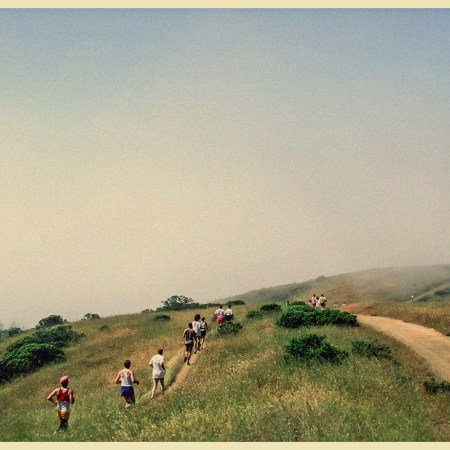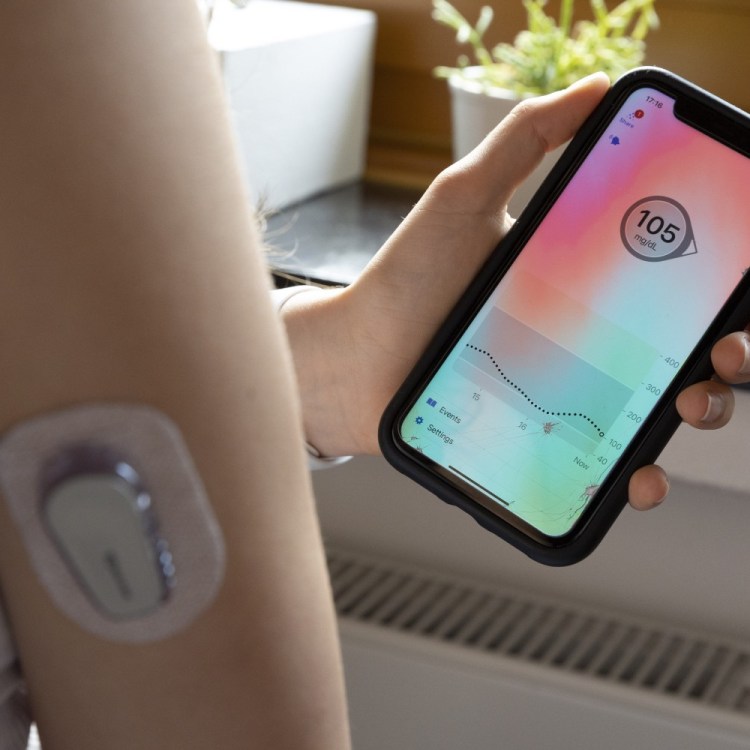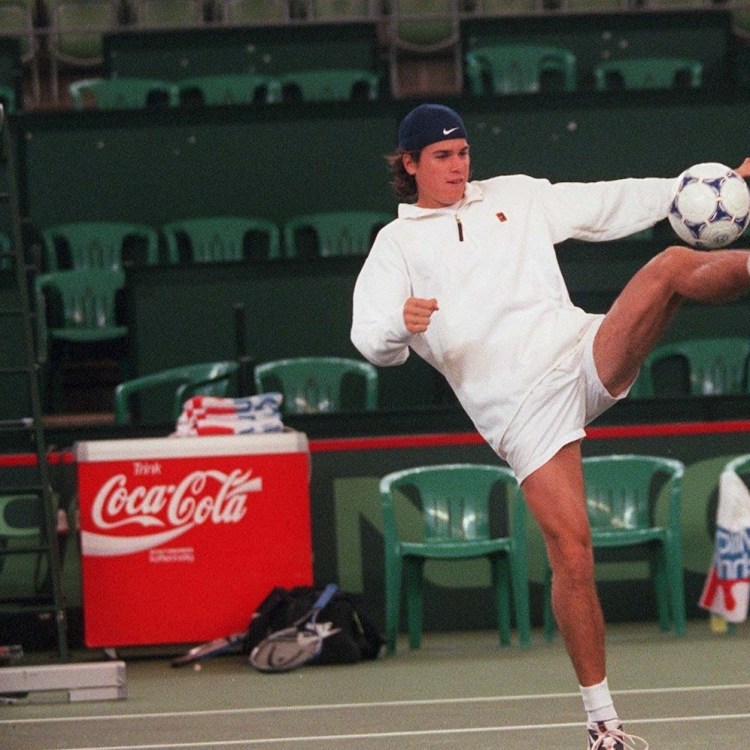
Growing up, I never really knew what to make of swimmers. They seemed a wacky bunch: clannish with chlorine-streaked hair, always boarding buses at the crack of dawn for aquatic centers around the county. From the outside, I guess, the whole thing just looked like a giant hassle — a difficult sport with tricky logistics. And that’s from the POV of a cross-country runner!
Decades later, though, I envy swimmers. I envy their dolphin lungs, their capacity for boredom, their knowledge of the rules and rites that govern pools. Their workout of choice is low-impact. It exists in both the gym and the wild. It offers a tantalizing combination of aerobic and anaerobic fitness.
And there’s also something oddly peaceful about it. A couple times I’ve been lucky enough to sit and watch swimmers at one of the world’s great swim clubs — Australia’s Bondi Icebergs — and I get a kick out of observing some of the oldest among their ranks move through the glacial blue water. One stroke after another, one breath after every three strokes, everything so practiced, rote and easy. Pure flow.
If you want to foster a swimming routine as an adult, it would help, of course, to have once been a high schooler bouncing from one meet to another around the county. But don’t worry, it’s possible to adopt the sport with no prior training. You don’t need to be fast, or even good, to thrive in the pool. You just need a little guidance to get you started — and maybe a few words of encouragement from someone who is fast.
I tapped Jack Alexy, one of the top freestyle swimmers in the world (and Olympic gold medalist), for his thoughts on how beginners can find their rhythm. Here’s what you need to get in the water, get moving and keep coming back.

Why the Pool Rules
First things first: why swimming? Before you start burning dollars and calories in service of the sport, it might pay to outline what exactly makes it worth your time.
Swimming is one of the few workouts that truly qualifies as full-body. You’re using your arms, legs, core — everything. And unlike running or strength training, swimming is remarkably low-impact, which means it’s far easier on your beleaguered workday back, and whatever injuries you’ve been carrying around since your 20s.
It’s also incredibly versatile. You can swim in a 25-yard gym pool or the open ocean. You can train for time or just zone out. You can chase splits, you can float. Even just treading water generates significant caloric burn and cardiovascular benefits. Here’s the stat to remember: 30 minutes of exercise in the water is equivalent to 45 minutes of exercise on land, according to Swim England. Little wonder that regular swimmers are 41% less likely to die from heart disease than non-swimmers.
There’s a robust mental component at play, too. Swimming requires breath control, rhythm and focus. It’s repetitive in the best way — a sort of therapy in motion, when done right. As Bonnie Tsui, author of Why We Swim, noted, “You don’t have to be a great swimmer to appreciate the benefits of sensory solitude and the equilibrium the water can bring.”
The science backs this up. A 2022 meta-analysis published in Frontiers in Psychiatry found that aquatic exercise significantly reduces symptoms of anxiety and depression, with mental-health improvements comparable to other well-established forms of treatment.
Unlike so many other workouts, swimming quiets your surroundings. No phones. No playlists. No chatter. In a distracted world, the sport constitutes a rare gift: a chance to disappear into a different one…and return calmer, lighter and stronger.
Suit Up, Show Up
What will you need to get started? Goggles, a swimsuit and a swim cap. And pool access, obviously. For the former, I recommend going with the best: Speedo. The century-old brand filters goggles by use case — fitness, racing, recreation — and they’re all typically in the $20 to $40 range. (This is true throughout the spectrum of swim goggles; it’s an affordable product.) Go with the Vanquisher 3.0 Mirror Goggles, if you’re looking for an exact rec.
Now, let’s talk swimwear. I get the reluctance to don anything tight — especially jammers, the form-fitting shorts most serious swimmers wear. But here’s the thing: even square-cut trunks, which might sound more stylish (think: Laguna Beach, 1977) are no less revealing. And regular board shorts will just slow you down, ballooning out in the water like a parachute.
My advice: get over it. No one’s looking, no offense. And once you’re in the pool, you won’t be thinking about what you’re wearing. Sort through Speedo’s wares here. TYR also has tons of great options. On the swim cap front, I’d recommend keeping it simple; there are some easy options at SwimOutlet.com. Depending on your pool club, you can usually pick up one in person, too.
To that point, pool access is going to require some local research on your own time. Start by searching your zip code in Swim.com’s pool directory, or check with your local Y, community center or university gym. U.S. Masters Swimming also has a Pool and Club Finder worth a look. You’re aiming for lane availability, open swim times and, ideally, a posted etiquette policy so you know what you’re walking into. If you don’t know how to swim at all — or feel like you’ve forgotten — just book a lesson. A factory reset is better than guessing.
If you can find one reliable lane, a few times a week, that’s enough to get started. The key is consistency. And if your original spot turns out to be a nightmare…pivot. It’s not you. It’s the pool.

Some Dos
Ease in with short sessions
In the U.S., the most common length for lap pools is 25 yards. (Some insider lingo for this distance: “short course yards” — half the length of an Olympic-sized pool.) Start with a few laps at a time, resting as needed. Focus on staying relaxed and horizontal in the water. You’re just trying to get comfortable. If you’re not going for a home run in distance, you shouldn’t go for a home run in duration, either. Sessions of 30 minutes are a great starting point.
Prioritize technique over power
According to Jack Alexy — who swims collegiately for the University of California, Berkeley, and qualified for the 2024 Summer Olympics in Paris — one of “the biggest misconceptions” among new or returning swimmers “is thinking that speed comes from just powering through the water.” His advice: “[Prioritize] proper body positioning, breathing and stroke technique to glide through the water with minimal effort.”
Be open to other strokes
If you’re like me, your mental image of swimming is just the front crawl, which is typically used in freestyle events — but there are three other competitive strokes: breaststroke, backstroke and the dreaded butterfly. Each stroke challenges your body differently, and switching it up keeps your shoulders happier in the long run. Consider starting with breaststroke to build confidence, as it’s widely considered the easiest stroke. And definitely look into the underrated sidestroke, which makes use of the scissor kick. It’s often taught in lifeguard training because of how sustainable it is over long distances.
Use simple drills to build rhythm
“For beginners, I highly recommend the ‘catch-up drill,'” Alexy says. “It focuses on improving arm technique and body rotation [for the front crawl], and it’s a great way to work on your stroke while also giving you a rhythm for pacing.” In short, you can’t start your next stroke until your lead arm has fully extended forward. It feels awkward at first, but that pause helps enforce symmetry, balance and timing. Here’s a great tutorial.
Speedo Vanquisher 3.0 Mirror Goggles
The gold standard for everyday lap swimmers. With a low-profile fit and watertight seal that actually holds, these are among the most-worn goggles on the pool deck.
Some Don’ts
Don’t forget to exhale underwater
Most nascent swimmers want to know how often they should breathe in, but don’t think much about breathing out. Holding your breath builds tension and zaps endurance. Here’s the plan: exhale slowly and steadily through your nose the entire time your face is in the water — don’t wait until right before you turn to breathe. Then inhale each time you turn your head, ideally every two or three strokes. Think of breathing as part of the stroke, not a break from it. It’ll take some time to master it, but once it clicks, it’s a game-changer.
Don’t rest in the middle of the lane
As Alexy puts it: “Try to rest at the wall or off to the side, so other swimmers can keep their rhythm.” As many have observed previously: some swimming pools have a nasty tendency to turn into absolute zoos. Do your part to respect lane courtesy and stay out of people’s way. People will notice and appreciate it. And once you’re at the wall, use your breaks to watch better swimmers. Imitation is free coaching.
Don’t ignore your body
“Shoulder mobility and overall flexibility are critical for swim strokes,” Alexy notes. Swimming is low-impact, not no-impact. Some common injuries: swimmer’s shoulder (swelling in the muscles and tendons that connect the shoulder blade to the upper arm bone), knee pain from breaststroke (the frog kick is a pretty unique motion for the body) and lower back pain, on account of bad form. Here’s a great warm-up routine. If something feels wrong, end your session and skip the next one.
Don’t race the triathlete in Lane 3
It’s not going to end well for you! Standard pool etiquette maintains that swimmers choose a lane that matches their speed. So once you’re in your lane — stay in it. Literally and figuratively. Handle your own business, at whatever level of effort or performance that dictates, and who knows, maybe you’ll end up in the faster lane at a later date. But one of swimming’s gifts is the opportunity to block everything else out. For that half hour, don’t worry about anything — or anybody — else.

How to Swim Forever
I devoted some space earlier to injury prevention and warm-up practices, because they both matter. It’s true: if you overdo it, you could get hurt from swimming. But overuse injuries are far more common among competitive swimmers. If you’re spending 90 minutes in the pool a week, moving slow and steady, you’ll almost certainly be just fine.
In fact, by swimming regularly you’re much more likely to prevent injuries in other arenas of life, whether they’re sports-related or aging-adjacent. Swimming strengthens the posterior chain, improves posture and reduces back pain. It builds muscular strength and cardiovascular health simultaneously, which is rare. The more you swim, the easier it becomes to keep swimming. It turns back the clock — a perfect healthspan sport.
If you’re looking for an extra edge, don’t neglect your “dryland.” That’s swimmer slang for out-of-water training. “A lot of swimmers forget that strength and mobility off the pool deck are just as important as what you do in the water,” Alexy tells me. His go-to moves: planks, resistance band work and shoulder mobility drills.
As you get stronger and more comfortable, start adding structure. Alternate steady laps with technique drills and interval sets. Keep track of how the water feels. When does your breathing settle? When does your body start to slice instead of fight? That’s your progress report.
If you eventually find yourself curious about open-water swimming, go for it — just go prepared. It’s a different beast entirely, as champion triathlete Timothy O’Donnell has outlined for us in the past.
In the end — coming from someone who’s run most days for the last 15 years — you have to love your chosen activity, whatever it is (or they are). You’ll know. It shouldn’t feel like a chore; it certainly didn’t look like a chore for those old fellas at Bondi. Build your swim routine around structure and progress, and you’ll get in shape, maybe swim for a few seasons. But build it around rhythm and joy, and you might just swim forever.
The Charge will help you move better, think clearer and stay in the game longer. Subscribe to our wellness newsletter today.













